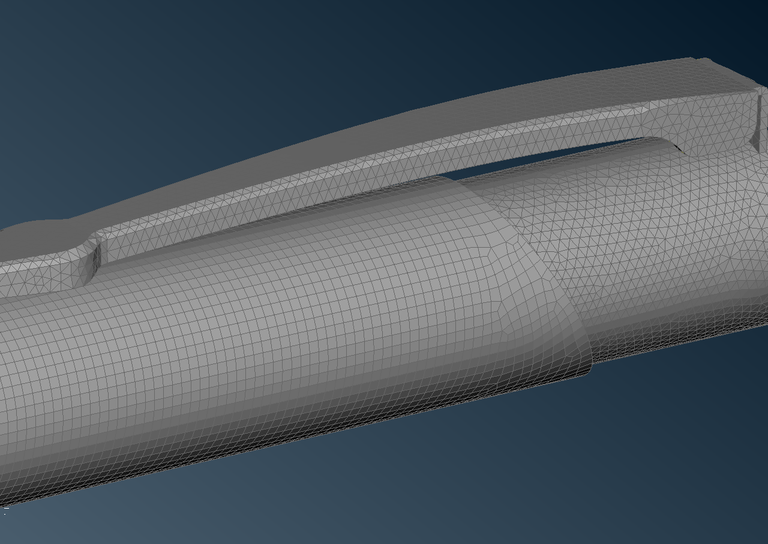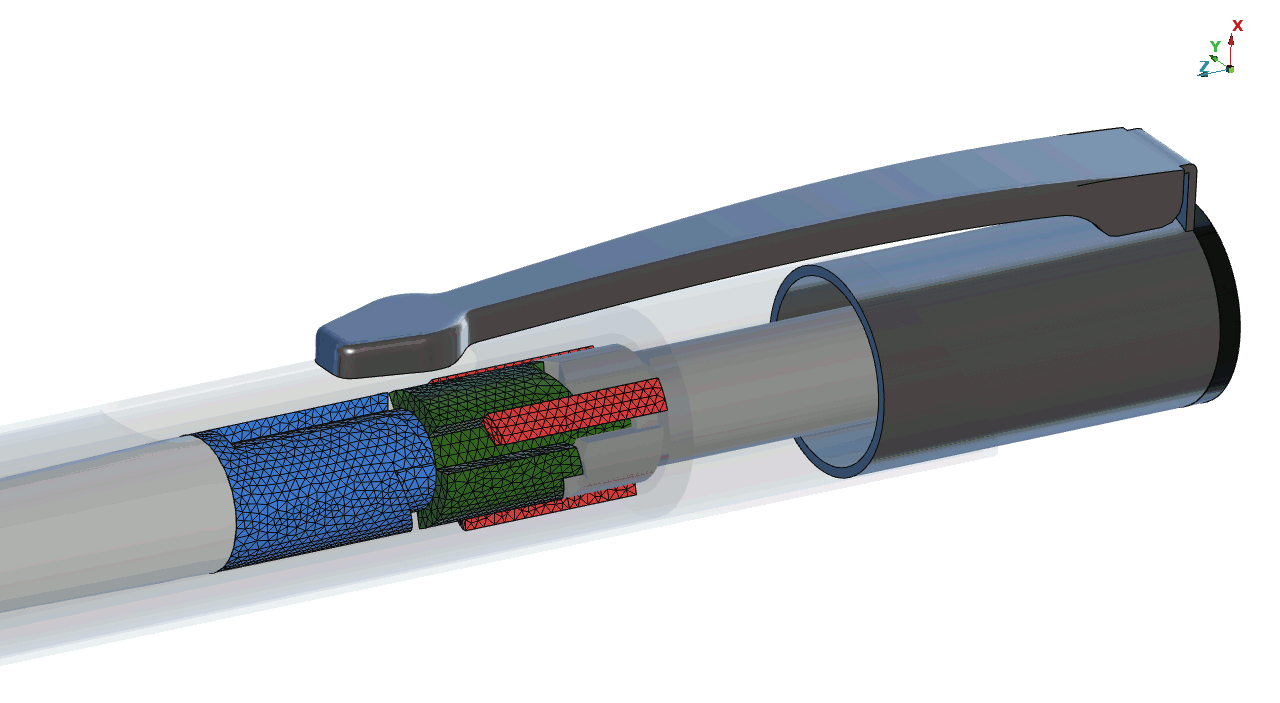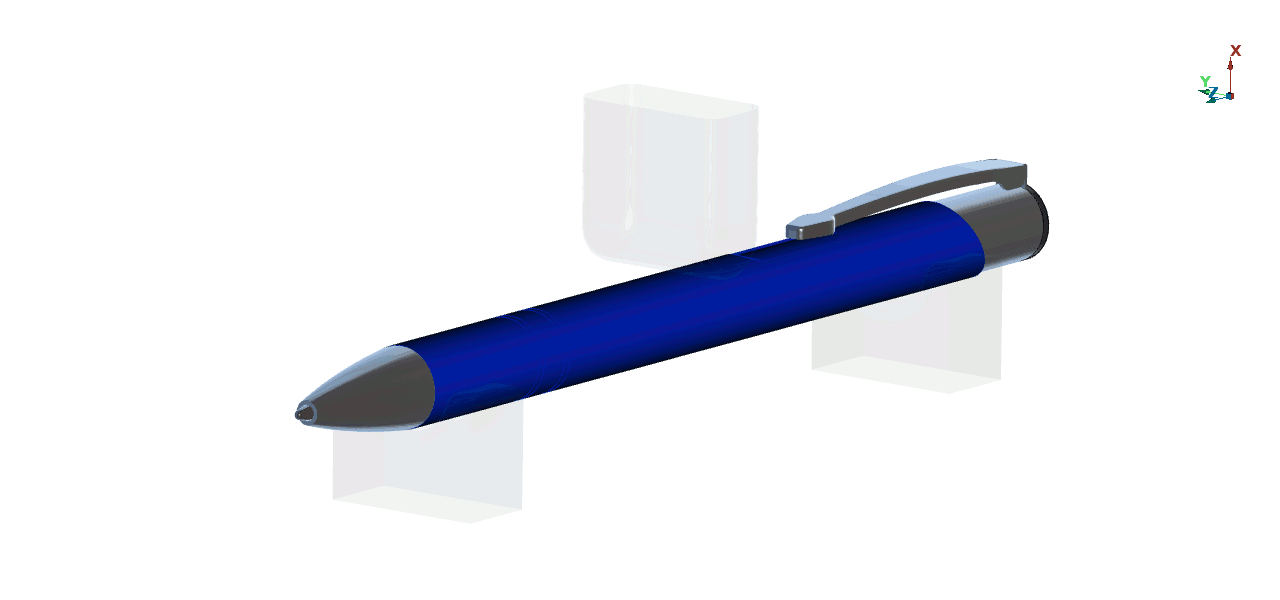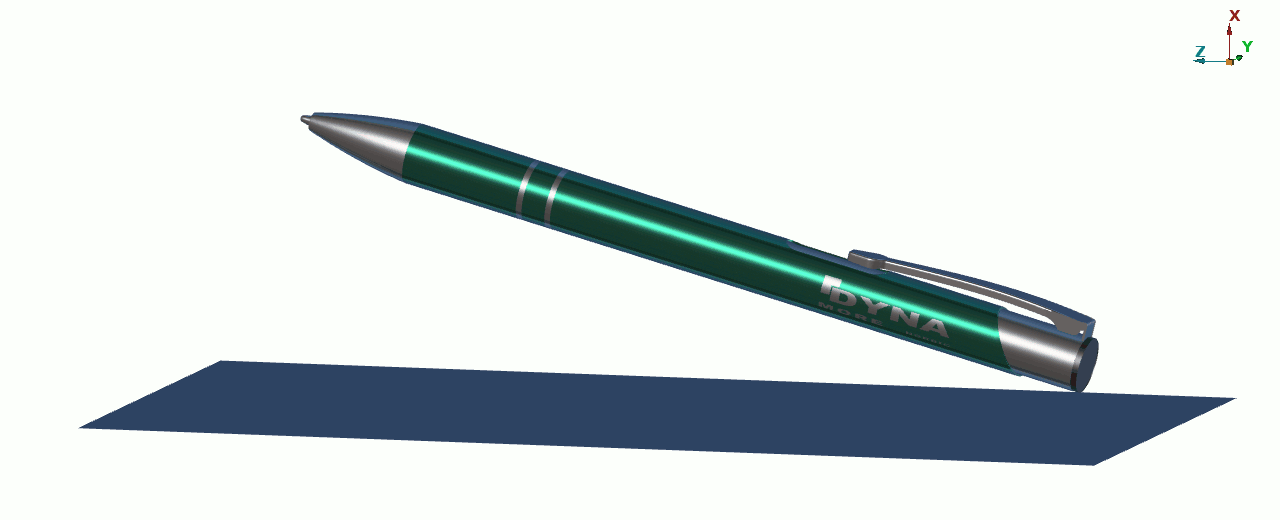Virtual prototype

Creating a virtual prototype
Due to technical limitations, finite element simulations are often performed only on the most critical component or subsystem for each load case. This can lead to a collection of specialized finite element models for the same product. With LS-DYNA it is often sufficient to build only one finite element model, a so-called virtual prototype, of the fully assembled product and use it for all load cases. A one model strategy can save both a lot of time as well as increase the accuracy of the results. Here we will demonstrate how one single LS-DYNA virtual prototype can be used for several load cases, by creating a virtual prototype of a pen with all its mechanisms.
Why virtual prototypes?
The LS-DYNA software is a leader in the race for simulation to match testing, and for many applications, LS-DYNA can today produce truly lifelike simulations. Even though advances in numerical solution techniques have made physically realistic simulations possible, why should one bother? There are several good reasons why customers use virtual prototypes, and the most common we encounter in our daily work with customers are
- to detect serious design flaws early, i.e. before costly testing of prototypes/production
- to quickly guide the designers in the right direction to fulfill the design requirements
- to reduce the number of prototypes
- to reduce time to market
- to optimize performance
From CAD to virtual prototype
Building a virtual prototype starts with a CAD drawing. The CAD is then converted to a finite element model in the preprocessor. In the preprocessor, it is possible to remove small design features, so-called defeaturing, that will not influence the product's structural response. Defeaturing simplifies the model and decreases the simulation run time on the computer.
Here we used the preprocessor ANSA to create the finite element model mesh of a pen and then prepare the model for simulation in LS-DYNA. ANSA is a complete solution covering all steps from CAD to the ready-to-run solver input file for LS-DYNA. ANSA can automatically defeature the model and has many options when it comes to meshing the model. Most of the preprocessing steps in ANSA can also be automated, a real time-saver, especially for repeated simulations of similar products.

One model – Many load cases
All the pen components are included in the finite element model – it is a true virtual prototype that can be used for all the load cases described below and many more.
Load case 1: Normal use of the pen
The first load case simulates the pen mechanism. This analysis utilizes LS-DYNAs easy to use automatic all-to-all contact algorithm that is capable of handling the sliding behavior over sharp edges between the parts. The model is also initialized with the correct pre-tensioning of the springs in the mechanism.

Load case 2: Bending stiffness - a measure of quality
With a three-point bending test, we can simulate the pen's bending stiffness – a stiff pen feels solid, which is a sign of quality. This simulation is a static load case, and we have added supports and a punch to simulate the correct test setup.

Load case 3: Drop test - overload/abuse
Finally, the pen model is used to simulate a highly dynamic load case. The drop test is a typical load case to check that the product's structural integrity is up to par. An initial velocity is applied to the pen, and we simulate the impact on a rigid surface.

To learn more
Simulations have time and again proven to be a cost-effective product development tool that avoids costly product redesign. We have the software and knowledge required so that you may learn to perform these simulations yourself. We will guide you all the way, including training and support. To learn more, please contact one of our technical experts listed on this page.